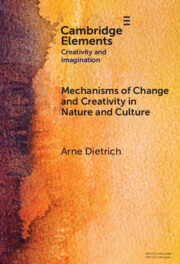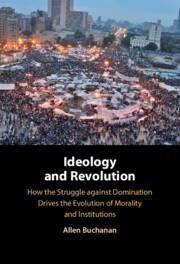Refine search
Actions for selected content:
127 results
Style evolution in Western choral music: A corpus-based strategy
- Part of
-
- Journal:
- Computational Humanities Research / Volume 1 / 2025
- Published online by Cambridge University Press:
- 07 October 2025, e13
-
- Article
-
- You have access
- Open access
- HTML
- Export citation
Cultural evolution in the laboratory: evolution of cooperative altruistic punishing
-
- Journal:
- Evolutionary Human Sciences / Volume 7 / 2025
- Published online by Cambridge University Press:
- 15 September 2025, e32
-
- Article
-
- You have access
- Open access
- HTML
- Export citation
A global database on blowguns with links to geography and language
-
- Journal:
- Evolutionary Human Sciences / Volume 7 / 2025
- Published online by Cambridge University Press:
- 27 August 2025, e26
-
- Article
-
- You have access
- Open access
- HTML
- Export citation
Opening strategies in the game of go from feudalism to superhuman AI
- Part of
-
- Journal:
- Evolutionary Human Sciences / Volume 7 / 2025
- Published online by Cambridge University Press:
- 26 August 2025, e28
-
- Article
-
- You have access
- Open access
- HTML
- Export citation
African harps as units of cultural evolution: a cladistic analysis on their morphology
- Part of
-
- Journal:
- Evolutionary Human Sciences / Volume 7 / 2025
- Published online by Cambridge University Press:
- 29 July 2025, e31
-
- Article
-
- You have access
- Open access
- HTML
- Export citation
Exploring factors for melodic diversification of folk songs in the Ryukyu Archipelago
-
- Journal:
- Evolutionary Human Sciences / Volume 7 / 2025
- Published online by Cambridge University Press:
- 22 July 2025, e23
-
- Article
-
- You have access
- Open access
- HTML
- Export citation
Quantifying and explaining the rise of fiction
- Part of
-
- Journal:
- Evolutionary Human Sciences / Volume 7 / 2025
- Published online by Cambridge University Press:
- 14 July 2025, e20
-
- Article
-
- You have access
- Open access
- HTML
- Export citation
Subjective selection, super-attractors, and the origins of the cultural manifold
-
- Journal:
- Behavioral and Brain Sciences / Accepted manuscript
- Published online by Cambridge University Press:
- 01 July 2025, pp. 1-59
-
- Article
-
- You have access
- Export citation
Intraspecific economics: interpersonal utility comparisons, evolution and culture
-
- Journal:
- Behavioural Public Policy , First View
- Published online by Cambridge University Press:
- 19 June 2025, pp. 1-22
-
- Article
-
- You have access
- Open access
- HTML
- Export citation

Mechanisms of Change and Creativity in Nature and Culture
-
- Published online:
- 03 April 2025
- Print publication:
- 03 April 2025
-
- Element
- Export citation

Ideology and Revolution
- How the Struggle against Domination Drives the Evolution of Morality and Institutions
-
- Published online:
- 13 March 2025
- Print publication:
- 20 March 2025
Chapter 4 - Back and Forth with Life: Development of a Developmentalist
-
-
- Book:
- Pillars of Developmental Psychology
- Published online:
- 14 February 2025
- Print publication:
- 20 February 2025, pp 32-43
-
- Chapter
- Export citation
Prestige and gender role ideology: a study of young Tanzanian men
- Part of
-
- Journal:
- Evolutionary Human Sciences / Volume 7 / 2025
- Published online by Cambridge University Press:
- 14 February 2025, e10
-
- Article
-
- You have access
- Open access
- HTML
- Export citation
The evolution of similarity-biased social learning
-
- Journal:
- Evolutionary Human Sciences / Volume 7 / 2025
- Published online by Cambridge University Press:
- 20 January 2025, e4
-
- Article
-
- You have access
- Open access
- HTML
- Export citation
Children as agents of cultural adaptation
-
- Journal:
- Behavioral and Brain Sciences / Accepted manuscript
- Published online by Cambridge University Press:
- 26 December 2024, pp. 1-68
-
- Article
- Export citation
Cultural transmission, networks, and clusters among Austronesian-speaking peoples
-
- Journal:
- Evolutionary Human Sciences / Volume 6 / 2024
- Published online by Cambridge University Press:
- 06 December 2024, e51
-
- Article
-
- You have access
- Open access
- HTML
- Export citation
Norm reinforcement, not conformity or environmental factors, is predicted to sustain cultural variation
-
- Journal:
- Evolutionary Human Sciences / Volume 6 / 2024
- Published online by Cambridge University Press:
- 03 December 2024, e49
-
- Article
-
- You have access
- Open access
- HTML
- Export citation
4 - Human Ancestry
-
- Book:
- Evolution for the People
- Published online:
- 21 November 2024
- Print publication:
- 28 November 2024, pp 84-103
-
- Chapter
- Export citation
Reputation-surveillance model of mate guarding: community size and religious veiling
-
- Journal:
- Evolutionary Human Sciences / Volume 6 / 2024
- Published online by Cambridge University Press:
- 30 October 2024, e37
-
- Article
-
- You have access
- Open access
- HTML
- Export citation
Cultural evolution as inheritance, not intentions
-
- Article
-
- You have access
- Open access
- HTML
- Export citation
